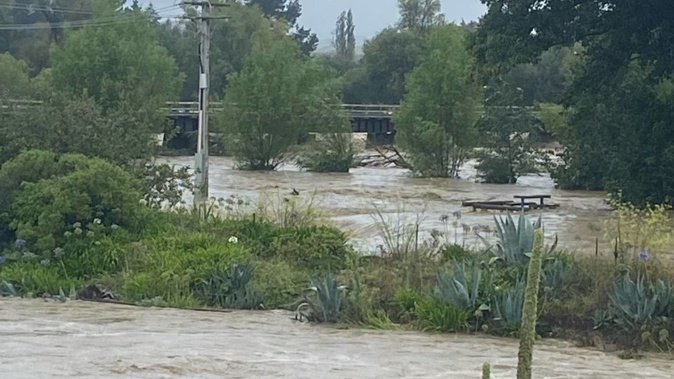
Cyclone Gabrielle was one of the most significant weather events to impact the region on record, Hawkes Bay Regional Council data shows.
Council team leader marine, air and land science, Dr Kathleen Kozyniak says many sites across the region did not transmit data during Gabrielle because communications networks went down.
“HBRC is receiving data now communications networks are running, with multiple sites recording significant rainfall totals during Gabrielle.
“We are still verifying all the totals, but they indicate Gabrielle was a large-scale event, with measured rainfall surpassing forecasts in one area by more than 250mm.”
Council chair Hinewai Ormsby says the newly released data confirms what those in Hawke’s Bay have suspected: that this was a catastrophic wind and rain event.
“This data reinforces the staggering amounts of rain we received versus what was forecast. It helps us understand how heavy the rain was in a relatively short period of time.
“While numbers such as these won’t provide comfort to those who have lost a loved one or a home or a business, they do put into context just what an extraordinary event Cyclone Gabrielle was,” says Ormsby.
The wind during Gabrielle means some recorded rainfall results may be lower than actual rainfall, as cyclone-strength wind can prevent rain from falling into rain gauges, says Kozyniak.
“The Glengarry site recorded 546mm of rainfall, the most of all the region’s sites, with almost 400mm falling in 12 hours at a maximum intensity of 56mm per hour.
“Sites along the southern coast had some of the highest falls in the region, as the high hills adjoining the coast are often exposed to storms arriving on easterly winds. Totals reached 450mm during the storm – about a quarter of the usual annual rainfall there - with rainfall intensity peaking at nearly 40mm per hour.
- Live: 'Just the beginning' - Gabrielle's eye on NZ: Heavy winds, monster waves; thousands without power
- 'Devoted’ mother survived breast cancer twice. She died after being swept away in flood
- Queensland disaster response team: We get floods 'but this is different'
“The eastern area of Wairoa is similarly exposed and was the other part of the region, alongside Glengarry, to get more than 500mm of rain.
“Gabrielle delivered about 320mm of rain to our Newstead site, in the western hills of the Ahuriri catchment near Puketapu, which is about one-third of the usual annual rainfall there – most of it falling within 24 hours.”
Some sites were not in place during Cyclone Bola in 1988, but those that were showed how powerful Gabrielle was, says Kozyniak.
“The two monitoring sites in the Porangahau catchment, which existed during Bola, experienced significantly more rainfall during Gabrielle. Twice as much rain fell on those sites during the most intense 24-hour rainfall period of Gabrielle than during the most intense 24-hour period of Bola.
“Gabrielle’s rainfall was also more intense than Bola during 6-, 12- and 24-hour periods at the seven sites in the Tukituki catchment in place in 1988.”
Many waterways throughout the region reached new levels, including the Mangaorapa, Porangahau and Taurekaitai streams and Wairoa, Waipawa and Tukituki rivers, says Kozyniak.
Take your Radio, Podcasts and Music with you









